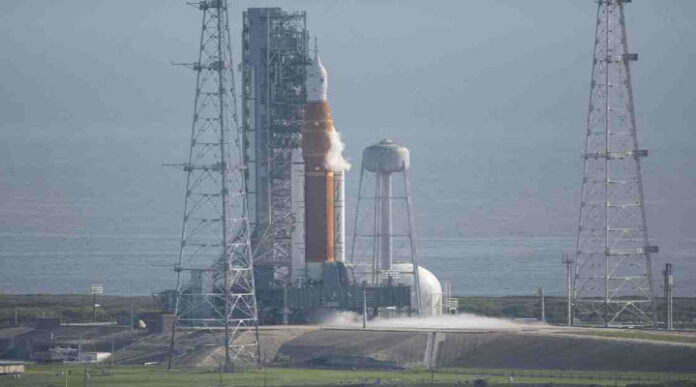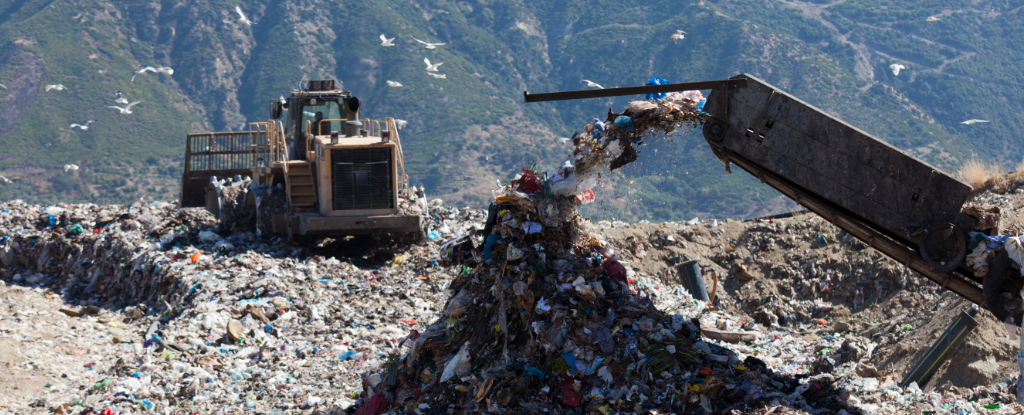NASA’s new moon rocket suffered another dangerous fuel leak on Saturday, forcing launch controllers to cancel their second attempt this week to send a crew capsule into lunar orbit with test dummies. The inaugural flight has been postponed for several weeks, if not months.
The previous attempt on Monday to launch the 322-foot (98-meter) Space Launch System rocket, NASA’s most powerful ever built, was also marred by hydrogen leaks, albeit on a smaller scale. This was in addition to leaks discovered during countdown drills earlier this year.
Following the latest setback, mission managers decided to remove the rocket from the pad and transport it to the hangar for additional repairs and system updates. Before the rocket is moved, some work and testing may be done on the pad. According to officials, several weeks of work will be required in either case.
The rocket is now grounded until late September or October, with a two-week launch blackout looming in just a few days. NASA will plan its efforts around a high-priority SpaceX astronaut flight to the International Space Station in early October.
NASA Administrator Bill Nelson emphasized the importance of safety, especially on a test flight like this, where everyone wants to validate the rocket’s systems “before we put four humans up on top of it.”
“Remember, we’re not going to launch until everything is perfect,” he said.
NASA has already been waiting years for the crew capsule to be launched atop the rocket around the moon. If the six-week demonstration is successful, astronauts may be able to fly around the moon in 2024 and land on it in 2025. The last time humans walked on the moon was 50 years ago.
At daybreak, launch director Charlie Blackwell-Thompson and her team had just begun loading nearly 1 million gallons of fuel into the Space Launch System rocket when a large leak appeared in the engine section at the bottom.
Ground controllers attempted to plug it by stopping and restarting the flow of super-cold liquid hydrogen in the hopes of closing the gap around a seal in the supply line. They tried it twice, and they also ran helium through the line. However, the leak persisted.
After three to four hours of futile efforts, Blackwell-Thompson called it quits.
It was too early to tell what caused the leak, according to mission manager Mike Sarafin, but it could have been caused by an inadvertent over-pressurization of the hydrogen line earlier in the morning when someone sent commands to the wrong valve.
“This was not a manageable leak,” Sarafin said, adding that the escaping hydrogen was two or three times flammable.
A series of small hydrogen leaks appeared there and elsewhere on the rocket during Monday’s attempt. Over the next few days, technicians tightened the fittings, but Blackwell-Thompson warned that she wouldn’t know if everything was tight until Saturday’s fueling.
Hydrogen molecules are extremely small — the smallest in existence — and even the smallest gap or crevice can allow them to escape. NASA’s now-retired space shuttles were plagued by hydrogen leaks. The new moon rocket employs the same main engines.
Even worse, a sensor indicated that one of the rocket’s four engines was too warm, though engineers later confirmed that it was indeed cool enough. This time, the launch team intended to ignore the faulty sensor and rely on other instruments to ensure that each main engine was properly chilled. But the countdown never reached that point.
Thousands of people who flocked to the coast over the long Labor Day weekend in the hopes of seeing the Space Launch System rocket soar were let down.
The $4.1 billion test flight is the first step in NASA’s Artemis program, which is named after Apollo’s twin sister in Greek mythology.
Artemis aims to establish a sustained human presence on the moon, with crews eventually spending weeks at a time there, despite being years behind schedule and billions over budget. It is regarded as a Mars training ground.
During the Apollo program, twelve astronauts walked on the moon for the final time in 1972.





